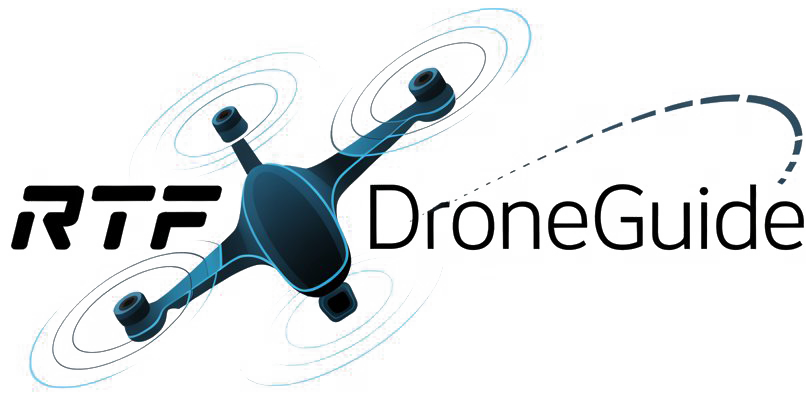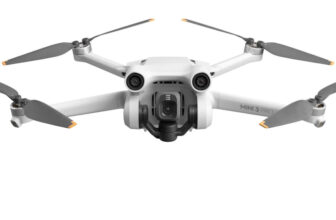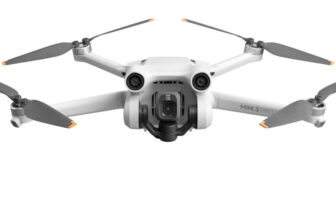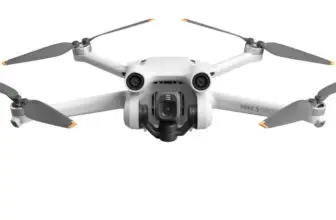What are RTF Drones?
RTF (Ready-to-Fly) drones are unmanned aerial vehicles that come fully assembled and equipped, allowing users to take flight shortly after purchase. Ideal for hobbyists and professionals alike, RTF drones are particularly advantageous for those who may lack the expertise or resources to assemble drones from individual components. These drones are often equipped with integrated flight control systems, GPS, cameras, and battery packs.
Types of RTF Drones
RTF drones can be categorized into several types based on their features, intended use, and price points.
1. Consumer Drones
Consumer RTF drones are primarily designed for recreational use. They commonly feature high-definition cameras for aerial photography and videography. Models like the DJI Mini and the Holy Stone HS720 are popular choices among hobbyists. They provide easy-to-use controls and come with built-in features such as GPS, altitude hold, and 3-axis gimbal stabilization.
2. Racing Drones
Racing drones are engineered for high-speed performance and maneuverability. These RTF drones often feature a lightweight design and may include customized components for enhanced agility. They are typically used in drone racing competitions, a thrilling sport that has gained substantial popularity. Brands like Eachine and Fat Shark offer robust RTF racing drones ideal for new racers.
3. Professional Drones
Used in commercial applications such as mapping, surveying, and agriculture, professional RTF drones often come with advanced features. These may include high-resolution cameras, thermal imaging, and specialized software for data collection. Notable models include the DJI Matrice and the Parrot Anafi USA, designed for enterprise users who require reliability and precision.
4. Expedition Drones
Designed for outdoor adventurers, expedition drones can withstand harsh weather conditions and are often built rugged to handle rough terrains. They are commonly used in search and rescue operations or for environmental monitoring. RTF drones in this category may feature longer flight times and enhanced battery life.
Key Features of RTF Drones
When considering an RTF drone, it’s essential to understand the features that differentiate one model from another:
1. Flight Time
The average flight time of RTF drones ranges between 10 to 30 minutes, depending on the drone’s battery capacity and weight. For instance, the DJI Mavic Air 2 offers about 34 minutes of flight time under optimal conditions. Flight time can greatly influence the usability of a drone, particularly for extended projects that require prolonged aerial operation.
2. Camera Quality
Most RTF drones come equipped with cameras, and their quality can significantly impact the user experience. Higher-end models often include 4K video capabilities, while entry-level drones may only offer low-resolution videos. Look for features like stabilization, wide-angle lenses, and adjustable settings for optimal footage.
3. Range
The operational range of an RTF drone is important for users who plan to fly their drones long distances. Typical flight ranges vary widely; some consumer drones, such as the DJI Mavic 2 Pro, can transmit signals and video feed from over 8 kilometers away, providing users broader accessibility for exploration and aerial photography.
4. GPS and Navigation
GPS-enabled RTF drones have advanced features such as waypoint flying, return-to-home capabilities, and geofencing. These features not only enhance flight safety but also add convenience for users. Many RTF drones come pre-installed with GPS modules, improving localization and overall flight experience.
5. Control Features
User interface and control features can significantly affect the ease of operation. Most RTF drones come with intuitive remote controls and mobile app integration. Moreover, some models support features such as automated takeoff and landing, height locking, and one-button filming functionality.
Benefits of RTF Drones
The RTF drones offer numerous advantages that make them appealing to both beginners and experienced pilots.
1. Ease of Use
RTF drones come pre-assembled, enabling users to operate them right out of the box. Users don’t need to worry about the complexities of assembly or configuration, making them an ideal choice for newcomers to the drone community.
2. Versatility
RTF drones can be utilized for various applications. Whether users want to capture stunning scenery, begin drone racing, or carry out aerial inspections, RTF drones offer flexibility for different interests.
3. Cost-Effective
While prices can range significantly based on models and features, RTF drones generally present a cost-effective solution for users who want to experience drone technology without overspending on custom-made options. Entry-level RTF drones can often be purchased for under $200.
4. Community and Support
Many brands offering RTF drones have robust community support systems. Users can access forums, tutorials, and customer service to assist with any issues or questions. Communities can inspire users and create opportunities for shared experiences.
Popular RTF Drone Brands
DJI
DJI is arguably the leader in the drone industry, known for producing high-quality RTF drones. Models like the DJI Phantom and Mavic series are sought after for their reliability and exceptional camera technology. Their extensive software ecosystem allows users to enhance their flying experience and improve the drone’s capabilities.
Parrot
Parrot is another prominent name in the RTF drone market, providing innovative solutions tailored for beginners and professionals alike. Their Parrot Anafi series stands out for its compact design and sophisticated camera features.
Holy Stone
Holy Stone offers budget-friendly RTF drones aimed primarily at entry-level pilots. Their drones feature user-friendly controls, decent camera quality, and protective features, making them an excellent choice for children and casual users.
Eachine
Known for their racing drones, Eachine provides affordable RTF models designed for speed and agility. Their drones are popular in the racing community, as they deliver a thrilling experience without needing extensive prior knowledge.
Choosing the Right RTF Drone
When selecting the appropriate RTF drone, consider the following dimensions:
1. Purpose
Identify the primary use of the drone. Are you looking for photography, racing, or commercial applications? Each category has specific drones best suited for that purpose.
2. Budget
Drones are available at various price points. Set a budget in advance, but be prepared to invest a bit more for enhanced features like better cameras and longer battery life.
3. Skill Level
Consider your experience level. If you’re a beginner, look for drones with user-friendly controls and many automatic features. Advanced users may seek models with extensive customization options or higher performance capabilities.
4. Reviews and Ratings
Do thorough research on user reviews and ratings. Reviews can provide insights into the drone’s performance, reliability, and post-purchase support, helping you make an informed decision.
Safety and Regulations
Flying RTF drones comes with responsibilities. Compliance with local regulations is critical to ensure safe and legal operations. In many countries, including the United States, users are required to register their drones if they exceed a certain weight, adhere to altitude limits, and respect privacy concerns by not flying over people or private properties without permission.
Knowledge of Airspace
Familiarize yourself with the airspace regulations and no-fly zones in your area. Apps like B4UFLY can help you check the airspace and ensure adherence to local laws.
Pre-Flight Checks
Before taking off, conduct a thorough pre-flight check to ensure proper function. Check battery levels, inspect the drone’s physical condition, and make sure GPS signals are acquired for safe operation.
FAA Rules
For US users, the Federal Aviation Administration (FAA) regulations state that drone operators must follow specific guidelines, including maintaining visual line of sight, not flying above 400 feet, and avoiding restricted airspace.
Aftermarket Upgrades
Consider upgrading various aspects of your RTF drone for a better performance experience. Options can include:
1. Batteries
Increasing battery capacity leads to longer flight times and improved operational efficiency. Many manufacturers offer extended battery packs that are compatible with RTF models.
2. Propellers
Upgrading propellers can enhance flight performance, increase speed, and improve stability. Selecting the right type of propeller based on drone specifications can provide noticeable enhancements.
3. Cameras
For those serious about aerial photography, upgrading the camera can lead to stunning visuals. Some drones allow for changing out the camera compatible with the drone, while others have set cameras.
Future of RTF Drones
The future of RTF drones appears promising, driven by technological advancements. Improvements in battery technology, AI integration, and increased autonomy will redefine user experiences. We can expect RTF drones to feature enhanced features such as obstacle avoidance, real-time data analytics, and improved user interfaces, making them even more appealing across varied sectors.
Rising interest in drone technology for commercial functionalities, paired with emerging applications in delivery services, agriculture, and construction, will continue to fuel market expansion. Moreover, user-friendly designs will lure new enthusiasts, solidifying RTF drones’ position as a revolutionary tool for both personal enjoyment and professional utility.
Exploration and Community Engagement
Joining communities centered around RTF drones encourages learning, sharing, and collaboration among enthusiasts. Engage in forums and attend local meetups or races where you can explore experiences with other pilots, share insights, and further develop your skills as an operator.
Overall, RTF drones represent a unique fusion of technology, creativity, and community. Being ready to fly means embracing a new frontier of aerial exploration, photographing breathtaking landscapes, and experiencing flight in ways that were once considered impossible. Consider your needs, research appropriately, and take to the skies with an RTF drone that fits seamlessly into your lifestyle.





